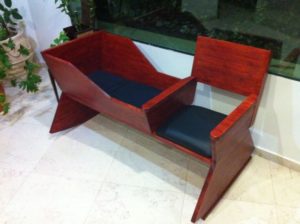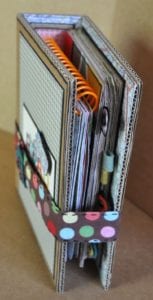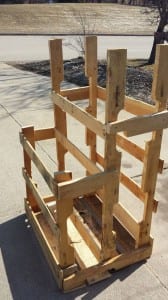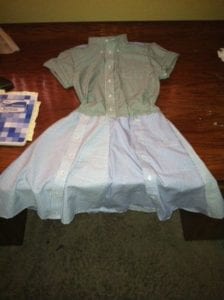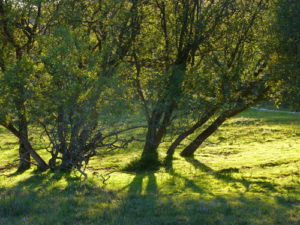Last Updated on May 17, 2024 by teamobn
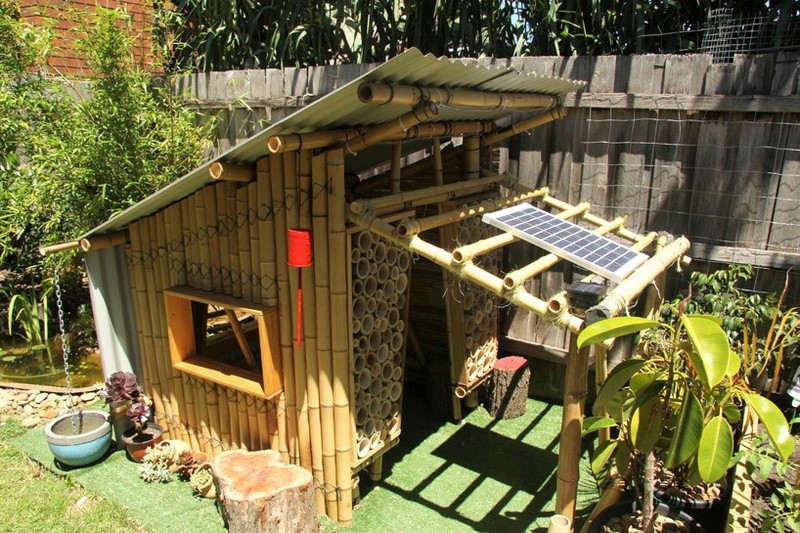
Every kid always wants their only little getaway within the comfort of their backyard. They imagine temporary forts from lawn chairs and sheets, ask their parents for a plastic little tike set, or get their treehouse nestled between branches and leaves up in the sky.
Providing a stronger architectural touch to these types of structures, we have constructed a miniature dwelling called the ‘Bamboo Cubby House’.
A bamboo cubby house is a type of playhouse made out of bamboo. They are usually small in size and have a simple design. Bamboo cubby houses provide a great place for children to play and explore. They are also a great way to teach children about environmental responsibility since bamboo is a sustainable resource.
Contents
7 Advantages of a Bamboo Cubby
Whether you’re interested in eco-conscious construction, a practical storage solution, or a unique addition to your space, a bamboo cubby combines functionality with environmental responsibility.
1. Eco-Friendly Material
Bamboo is a renewable and eco-friendly material known for its rapid growth, making it an excellent choice for environmentally conscious builders. By opting for a bamboo cubby, you contribute to sustainable construction practices.
2. Cost-Effectiveness
Utilizing bamboo as the primary building material can significantly reduce construction costs compared to traditional alternatives. This affordability makes it an accessible option for a wide range of budgets.
3. Durability and Strength: Despite its lightweight appearance, bamboo is surprisingly durable and can withstand various environmental conditions. A bamboo cubby offers a robust and long-lasting solution for storage or shelter needs.
4. Versatility in Design: Bamboo is highly versatile and can be fashioned into various shapes and forms, allowing for a wide range of design possibilities. This versatility enables you to customize your cubby to suit specific aesthetic preferences and functional requirements.
5. Easy Maintenance: Bamboo is relatively low maintenance compared to other building materials. It requires minimal upkeep to retain its structural integrity and aesthetic appeal, making it a practical choice for long-term use.
6. Natural Aesthetic: The natural texture and appearance of bamboo lend a unique and visually appealing aesthetic to any space. A bamboo cubby can seamlessly blend with outdoor environments or complement interior decor, adding a touch of natural elegance.
7. Educational and Hands-On Experience: Building your affordable bamboo cubby provides a valuable hands-on learning opportunity. It allows you to gain practical construction skills while fostering a deeper appreciation for sustainable building practices.
Opting for an affordable Giant Grass Bamboo Cubby offers a host of benefits ranging from environmental sustainability to cost-effectiveness, durability, design versatility, ease of maintenance, aesthetic appeal, and the opportunity for hands-on learning. This combination of advantages makes it a compelling choice for those seeking a sustainable and budget-friendly solution for their space needs.
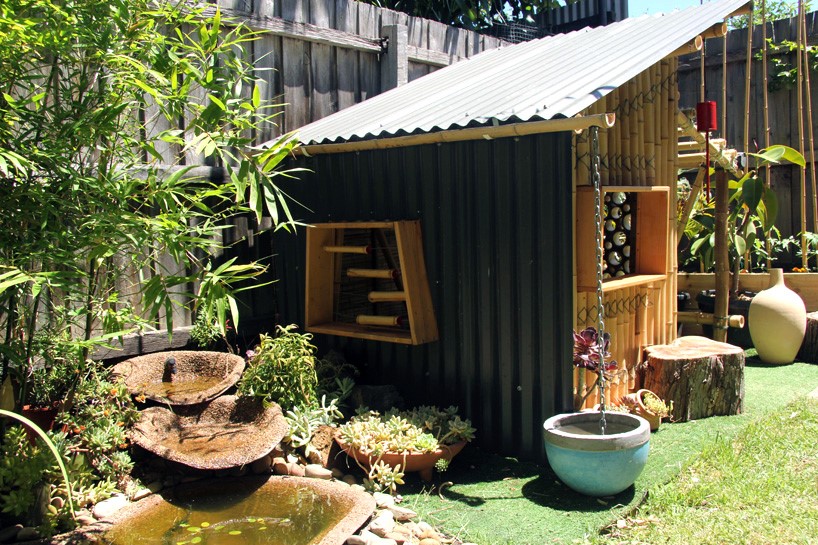
Building a Bamboo Cubby
The bamboo cubby is a 1.2 x 1.2-meter building that has been built from bamboo and recycled colour bond roofing and timber. Its perimeter explores various techniques of making bamboo screens and walls with half-split poles that have been stitched by pins and sisal rope to create a weatherproof barrier. Above, the corrugated metal roofing is fixed to the supporting partitions using J-bolts.
Voids in the façade have been made for the insertion of the window and door frames of timber planks. The result is the utilization of cross-sectional, cylindrical stalks and a change in the stitching pattern. The gutter is also made from bamboo with a drip chain providing a rain feature.
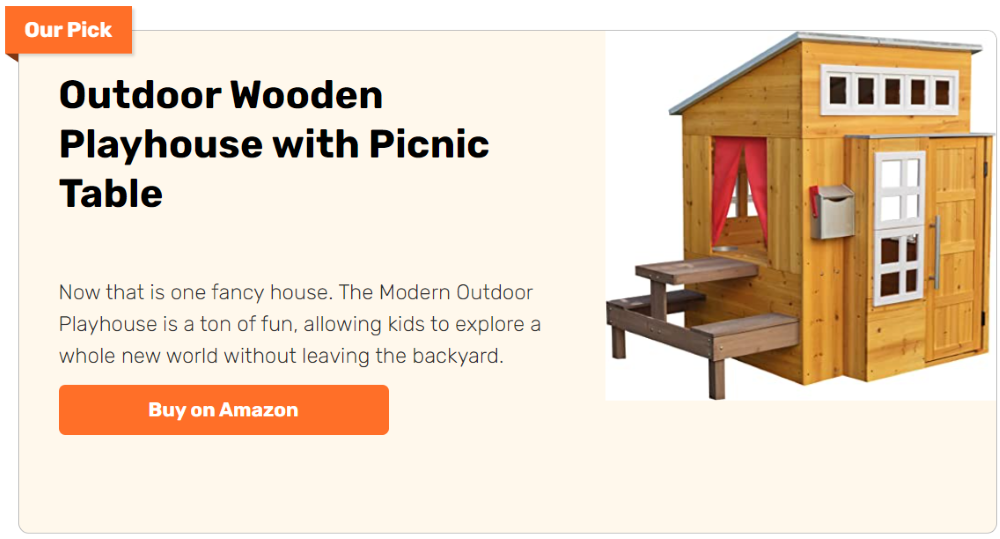
The bamboo cubby has been developed as a prototype for an eco-cabin with passive design principles. The entrance veranda is topped with a pergola roof and solar panel that is capable of powering LED lights and a solar pump in the adjacent pond.

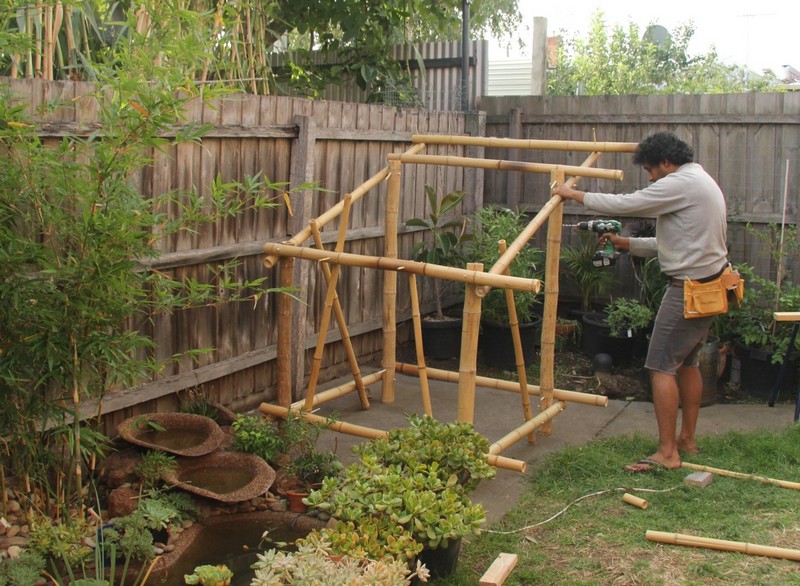

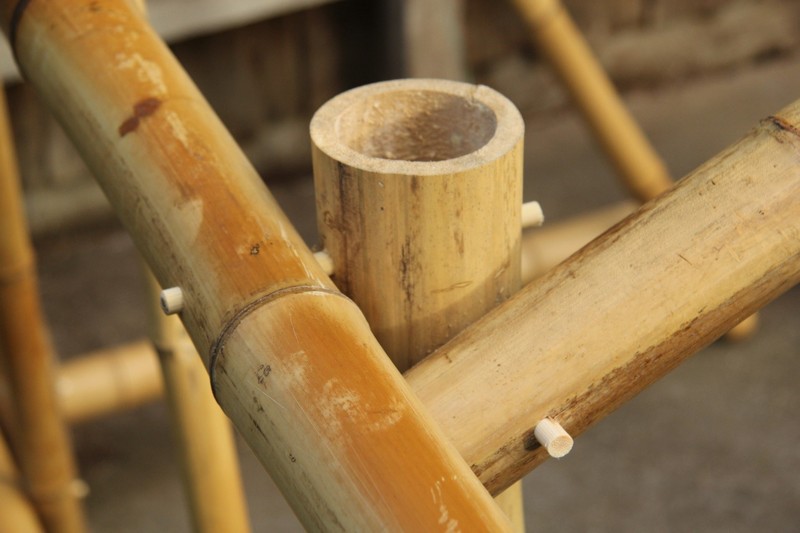







Kids enjoying the bamboo cubby


Bamboo Maintenance and Longevity
Maintaining a bamboo cubby ensures its durability and extends its lifespan, making it a sustainable choice for long-term use. Bamboo, while naturally resilient, requires specific care to preserve its structural integrity and aesthetic appeal.
Here’s a guide on how to maintain your bamboo cubby effectively.
Regular Cleaning
Regular cleaning is essential to keep your bamboo cubby looking its best. Use a soft brush or cloth to remove dirt and debris. For deeper cleans, a mild soap solution can be used. Rinse the bamboo thoroughly with water to remove any soap residue, and allow it to dry completely in the open air. Avoid using harsh chemicals, as they can damage the bamboo’s natural surface.
Moisture Control
Bamboo is particularly susceptible to moisture, which can lead to mold and mildew growth. Ensure your cubby is well-ventilated to prevent moisture buildup. If your bamboo starts to show signs of mold, clean it with a solution of vinegar and water. This not only removes the mold but also prevents future growth. In rainy climates, consider installing a waterproof cover or positioning the cubby under a shelter.
Pest Prevention
Termites and other wood-boring insects can damage bamboo. Treat your bamboo cubby with borate-based products, which are effective at preventing infestations while being safe for the environment. Regular inspections are crucial; look for signs of pest activity, such as holes or sawdust. Early detection and treatment are key to preventing significant damage.
Protective Finishes
Applying a protective finish can significantly extend the life of your bamboo cubby. Use natural oil finishes, such as linseed or tung oil, which penetrate deep into the bamboo and provide protection from UV rays and moisture. Reapply the finish annually or biannually, depending on your climate and the cubby’s exposure to elements.
Structural Inspections
Periodically check the structural integrity of your bamboo cubby. Look for any cracks, splits, or loose connections and address these issues promptly. Tighten any loose bolts and replace damaged sections as necessary. Regular maintenance checks will help ensure the safety and stability of the cubby over time.
Sunlight Exposure Management
While bamboo can withstand some amount of sunlight, prolonged exposure can cause it to become brittle and discolored. To prevent this, position your cubby in a location where it receives partial shade, especially during the peak sunlight hours. If moving the cubby isn’t feasible, consider using UV-protective shades or curtains during the sunniest parts of the day.
Temperature and Humidity Checks
Extreme temperatures and fluctuating humidity levels can affect bamboo’s natural properties. In areas with high humidity, ensure adequate air circulation around and inside your cubby to prevent the bamboo from swelling and warping. In very dry climates, occasional misting can help maintain the natural moisture level of the bamboo, preventing it from cracking.
Sealing Gaps and Cracks
Over time, small gaps or cracks may appear in the bamboo due to natural expansion and contraction. These can be sealed using a silicone-based sealant that matches the color of the bamboo. This prevents water from seeping into the cracks and causing further damage.
Addressing Fading and Weathering
If your bamboo begins to show signs of fading or weathering, you can revive its appearance by lightly sanding the surface and applying a fresh coat of stain or paint designed for use on bamboo. Choose eco-friendly products to maintain the sustainability aspect of your cubby.
Winterizing Your Bamboo Cubby
In colder climates, it’s important to prepare your bamboo cubby for winter. Clearing any accumulated snow from the roof will prevent excessive weight and potential damage. Additionally, covering the cubby with a breathable, water-resistant cover can protect it from severe weather conditions.
These maintenance steps lets you enjoy your bamboo cubby for many years. Regular care not only preserves the quality of the bamboo but also ensures that the cubby remains a safe and beautiful space for enjoyment.
The Wrap Up
Choosing to build an affordable Giant Grass Bamboo Cubby presents a range of compelling benefits. From its eco-friendly properties to cost-effectiveness, durability, and versatile design, the advantages are numerous.
Bamboo’s sustainability reduces environmental hazards, and its strength ensures the longevity of your cubby. Its versatility allows for custom designs that can enhance any space, while its natural aesthetics provide a touch of elegance.
Additionally, building with bamboo is budget-friendly, quick to construct, and offers an educational experience in sustainable building practices. In essence, a Giant Grass Bamboo Cubby offers an eco-conscious, cost-effective, and stylish solution for various space needs.
About Munir Vahanvati:

Munir is an architect and urban designer with more than 12 years of industry experience. He has been involved in working with bamboo for the last 10 years. He is passionate about designing and using the natural form of bamboo to create rhythmic structures that create a play of light and shade. In Nov 2013 Munir took on the role of Vice-President at the Bamboo Society of Australia.
About Giant Grass:
Giant Grass is a social enterprise focused on sustainability and hands-on learning through bamboo. In addition to designing and building structures out of bamboo, it regularly conducts Bamboo Construction Workshops in Melbourne and across Australia. For more information on the company projects and workshops please visit www.giantgrass.com

